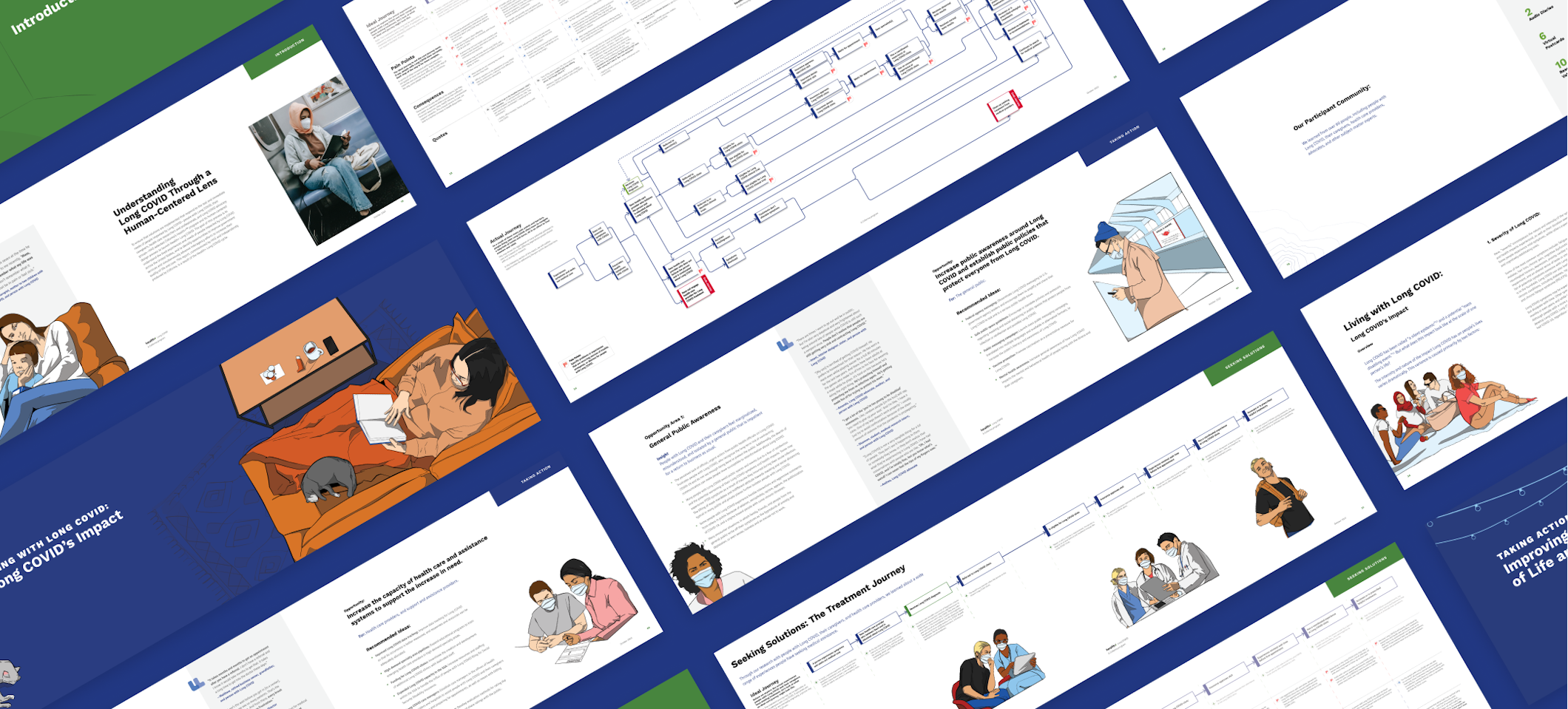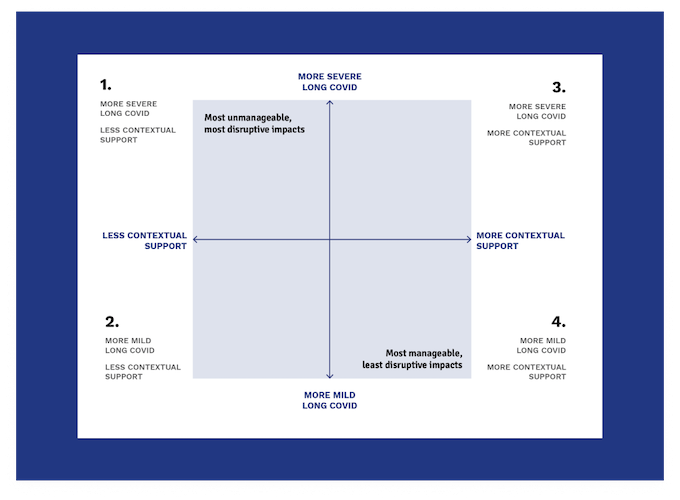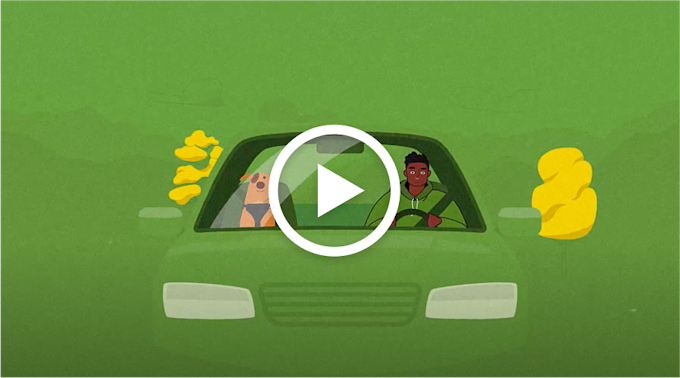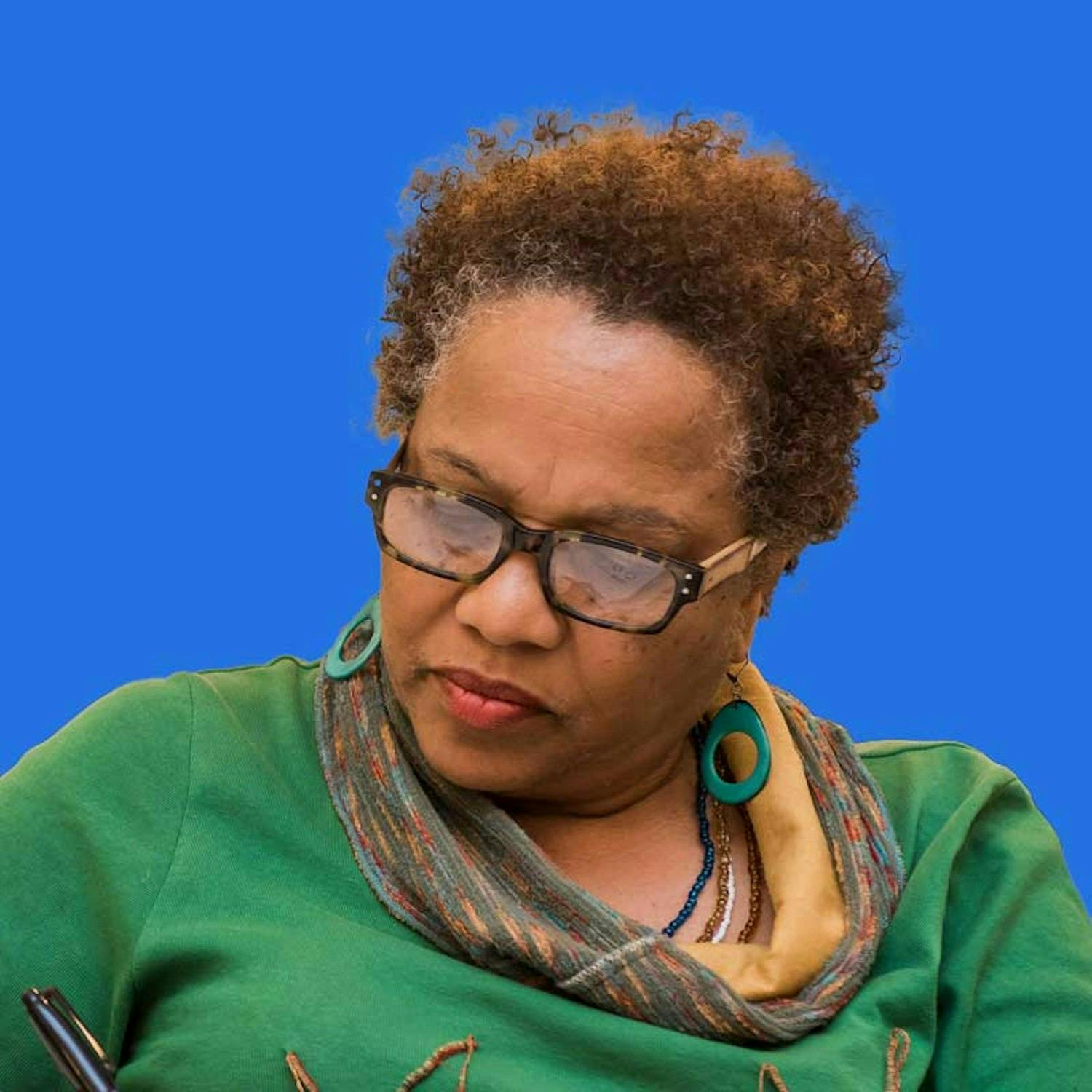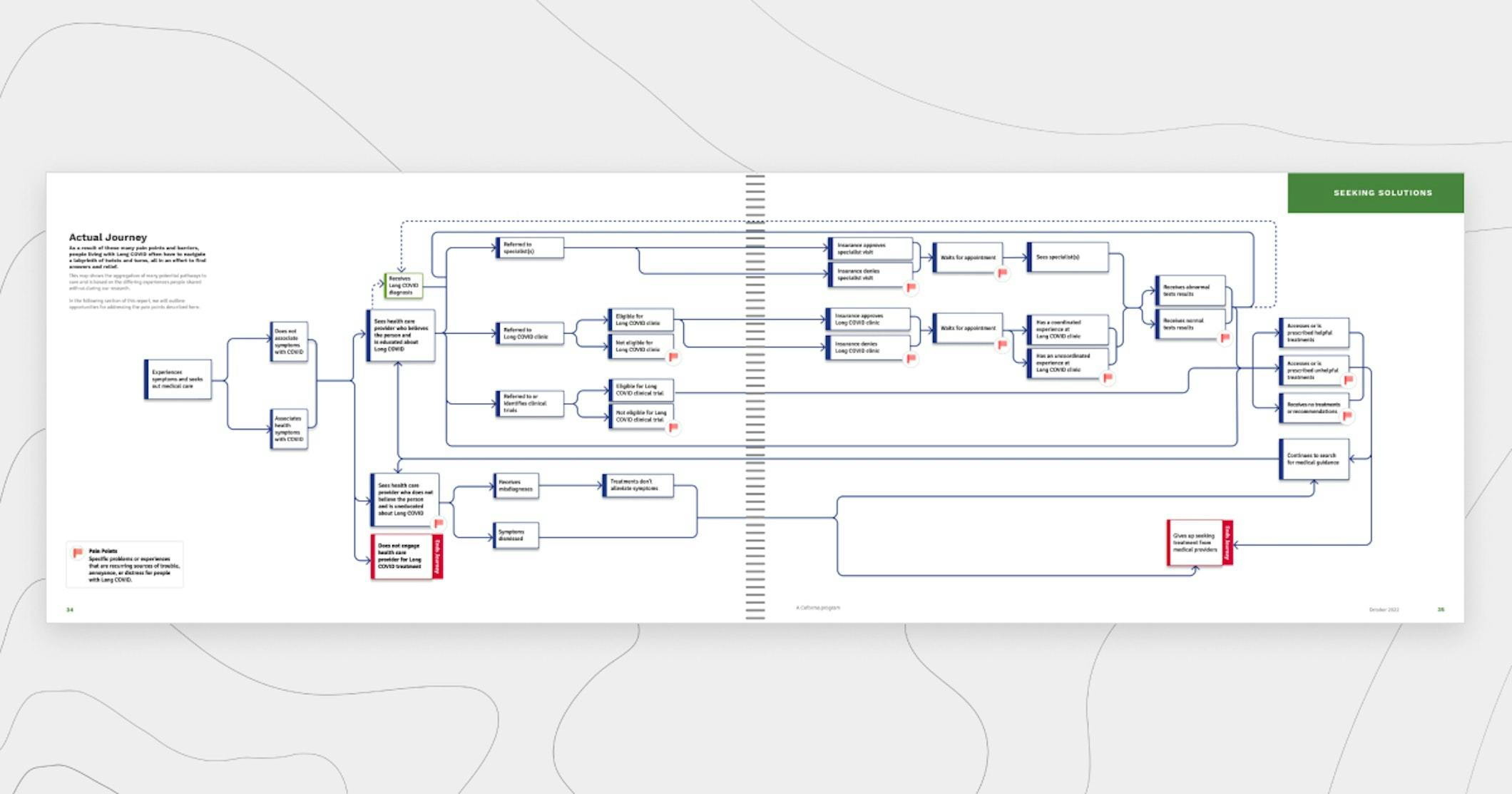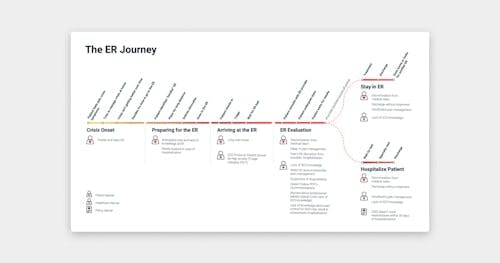Understanding Long COVID Through Human-Centered Design
- Client Name:
- US Department of Health and Human Services
- Partner Name:
- INSI Cloud
- Delivery Date:
- October 2022
To accelerate solutions for people living with Long COVID, we led with empathy to meaningfully engage them, working collaboratively to identify what they want and need to live healthier and more supported lives.
During the pandemic, people who had been infected with COVID-19, from all backgrounds and communities, began reporting symptoms lasting or fluctuating beyond three weeks, sometimes with disabling consequences. These individuals reported a variety of symptoms—long-term effects of the COVID-19 infection which have come to be known, collectively, as ‘Long COVID.’ According to the Centers for Disease Control and Prevention (CDC), nearly one in five American adults who have had COVID-19 still have Long COVID, with symptoms ranging from mild and barely perceptible, to ever-present and wholly debilitating.
In April 2022, the US Department of Health and Human Services (HHS) published two reports, Services and Supports for Longer-Term Impacts of COVID-19 and the National Research Action Plan on Long COVID. To complement the findings and recommendations of these earlier reports, HHS leveraged Coforma’s Health+ program to broaden the conversation and elevate what is often underrepresented in Long COVID statistics, scientific literature, and policy making—the narratives and expertise of people with Long COVID and what they want and need to live better, healthier lives.
The Health+ Long COVID program cycle included the development of the Health+ Long COVID Human-Centered Design (HCD) Report, the creation of a three-part animated video series to convey the lived experiences of people living with Long COVID, and a preliminary Healthathon to innovate solutions based on the research done by Coforma.

